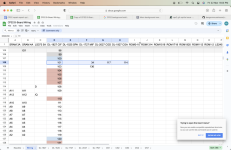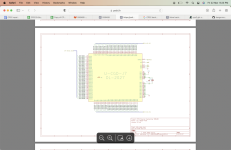GoldenGlover
Grand Master
As I continue to refine my repair techniques on servicing things that will inevitably fail on these ancient relics we call arcade PCBs, I’ve run into a roadblock with a CPS2 B board repair. Long story short: I’m missing background graphics after a series of repairs to a B board that was dead & wouldn’t originally display anything.
B board is a Rev-7; A board I use to test is confirmed working.
When I got this B board, it was sold as not working so I knew what I’d be getting into out of the gate. I observed no trace damage anywhere but many of the LS245 logic chips had corrosion, along with a LS04 chip near the 01 & 02 Q-Sound program roms. The game I'm trying to fix is Puzz Loop 2 (I’m desperately trying to fix this so I can play it with my kids someday).
I burned decrypted Japanese roms to speed up testing (03 through 06) which all tested well after burning. Also reprogrammed the 01 rom from a MAME parent set.
Before doing any repairs, I burned Raz’s suicide tester rom & put it in 03. When booting, the Q-Sound music would play but nothing comes on screen.
So far, I’ve done the following to get it from not outputting anything to outputting Q-Sound and all sprites:




My questions to any CPS2 gurus reading this are:
B board is a Rev-7; A board I use to test is confirmed working.
When I got this B board, it was sold as not working so I knew what I’d be getting into out of the gate. I observed no trace damage anywhere but many of the LS245 logic chips had corrosion, along with a LS04 chip near the 01 & 02 Q-Sound program roms. The game I'm trying to fix is Puzz Loop 2 (I’m desperately trying to fix this so I can play it with my kids someday).
I burned decrypted Japanese roms to speed up testing (03 through 06) which all tested well after burning. Also reprogrammed the 01 rom from a MAME parent set.
Before doing any repairs, I burned Raz’s suicide tester rom & put it in 03. When booting, the Q-Sound music would play but nothing comes on screen.
So far, I’ve done the following to get it from not outputting anything to outputting Q-Sound and all sprites:
- Replaced all LS245s on 10A, 10B, 10C, 10D, 10E, 10F, 10L and 10M with NOS LS245s and/or working pulls from a CPS1 A board with a dying A01 chip
- Replaced the LS04 near the 01 program rom
- All these gates that were replaced had their traces beeped for continuity. No issues.
- The first SIMM for the graphics roms (PL2 3) actually had three of its 29F016’s loose on the substrate. No bueno! I
- I reflowed all the chips, ensuring good contact.
My questions to any CPS2 gurus reading this are:
- Is my data on one of the graphics SIMMS corrupt?
- Do I have a failing custom? (doubt it given how clean and corrosion free they are
- Is this still a gate-type issue re: the Ls245s? Or something else?
- Why would the CPS2 suicide test rom (when putting back into 03’s spot on the B board) *still* not show any sprites but only play audio after all these fixes?
Last edited:




